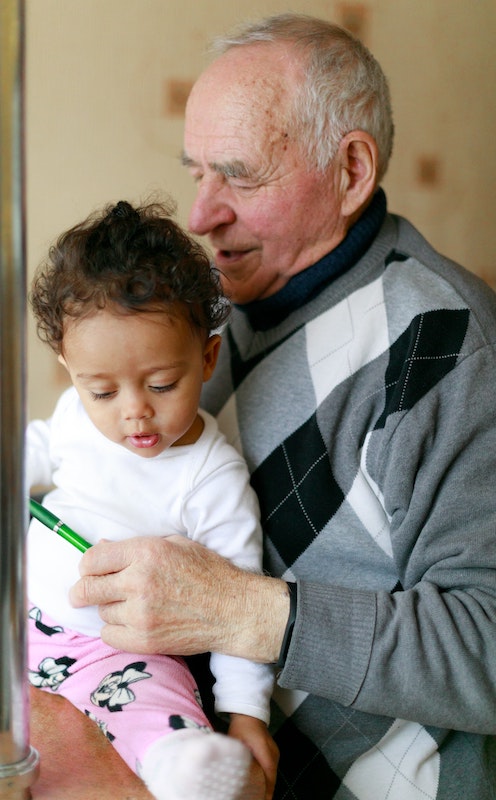Learn more about CFSS in Minnesota
Senior technology is not an oxymoron. Entrepreneurs in Silicon Valley and beyond are working on new assistive and adaptive senior technologies. The goal is to make aging in place easier and better than ever.
The seniors in your life may not have mastered the iPhone -- or even the TV remote. But, there's no denying that new technology is making aging more manageable than ever before. Let's explore the senior technologies that are bypassing the roadblocks of growing older.
1. Technology Disrupting Vision Loss
We put our glasses on without a second thought – if we even still wear corrective lenses. Gone are the days when poor vision meant a magnifying glass or squinting. The perils of old age that Benjamin Franklin's bifocals erased now face the eradicating power of the laser.
Lasik is an outpatient procedure that corrects nearsightedness, farsightedness and blurred vision. It allows an ophthalmologist to reshape the cornea to perfect your vision. Eleven million Americans have enjoyed its benefits. Now, the popular procedure is available for seniors with weakened reading vision. This procedure -- multifocal Lasik -- is currently under review by the FDA. Can't wait for this groundbreaking technology? Try Canada or Europe. The Europeans have had access to multifocal Lasik since 2002.
“I envision that future technology will go even further to aid individuals suffering from vision loss,” said Andre Best, owner of Best Home Care. “Products like Google Glass may someday be able to act as eyes to the blind, as apps and other technologies are built around and to work with Glass and competing products.”

2. Technology Disrupting Senior Transportation
Modern seniors have modern options to get from point A to point B. While Uber and Lyft have traction amongst the young, LiftHero provides transportation for seniors in need.
LiftHero drivers are healthcare professionals or pre-health students. The senior focused staff provides door-through-door transportation seniors in need. The transportation options are much more affordable than other private transportation services and safer than public transportation options. The company is San Francisco-based with plans to expand beyond in 2014.
“Technology may also be developed to help seniors in arranging for transportation and which may coordinate with providers to provide adequate documentation for reimbursement under Medicare,” said Best. “I can see a great opportunity for the development of apps in this area.”

3. Technology Disrupting Hearing Loss
Can you hear me now? It's not just a humorous Verizon Wireless commercial. Loss of hearing is a real concern in the natural process of aging. But there's a stigma associated with traditional hearing aids. They are bulky and big.
We have come a long way since the era of the ear trumpet, circa 1700. But the behind-the-ear hearing aid invented in the 1970s is still ugly. The impact is that people don't wear them or don't want to wear them. There's a stigma that it's better to not hear all the whispers than to have a hearing aid in. Our natural vanity has senior safety consequences. Hearing helps regulate balance; untreated hearing loss leads to more falls.
The solution isn't to avoid the hearing aid but rather to innovate toward a smaller, more powerful device. German tech powerhouse Siemens offers the Eclipse which rests deep within the ear – it is almost invisible.
We could also make the hearing aid look more attractive. Then, people won't mind if it shows.
A new startup, Audicus is moving toward that goal. The company launched a line of affordable designer hearing aids. By removing middle men and selling direct online, Audicus opens the hearing aid market to all.
In addition, emerging apps like Mimi are changing the hearing aid market. Mimi allows seniors to test their hearing and determine whether they need hearing aids. Mimi also simulates hearing loss for younger users, helping them empathize with the seniors they love.
4. Technology Breaking "The Fall"
The much-parodied senior fall ads speak to a genuine need. Part of the natural process of aging is worsened eyesight and a more delicate sense of balance. Another natural progression is that our bodies grow frail. The falls of our youth become life-threatening, but technology offers solutions.
The question is: What best suits the needs of your senior?
For seniors who would like occasional help in case of a fall, a medical alert system can be a lifesaver. For seniors who want constant surveillance, a variety of systems offer around-the-clock coverage. At the 2013 Consumer Electronics Show, Grandcare showed off their new system. The sensors and screens track a senior's physical activity at home. The system alerts a caregiver or loved one if there has not been movement for a predesigned period of time. The alarm may also sound if a person has not taken his or her medication.
Active Protective provides advanced fall prevention in a different method. The senior dons advanced undergarments that detect falls and deploy hip airbags. The split second inflation breaks the fall and reduces injury risk by up to 90%. The underwear also acts as a medical alert device and calls for help.
“Most of the time although an individual might qualify for home care services, they will not receive authorization for 24-hour care even thought they need constant monitoring,” said Best.“Technology such as personal emergency response devices will continue to reduce the risks associated with falls when the person in need of care is alone.”
Conclusion
Savvy caregivers and seniors have long known that smart use of senior technology can change lives. Finally, today's entrepreneurs are joining the party. The challenges of aging are many and our seniors are ready and waiting.
Shayne Fitz-Coy is the Co-CEO and President of Alert-1, an aging-in-place technology company headquartered in Williamsport, Pennsylvania with offices nationwide. Shayne has a Bachelor's degree in Psychology from Harvard College and a Masters in Business Administration from the Stanford Graduate School of Business. Shayne hails from Maryland, and now calls the Bay Area home.
Andre Best is the founder of Best Home Care, a Minnesota-based home health care agency. Andre and his team provide non-medical personnel and homemaking services to seniors. The dedicated Personal Care Assistants (PCA) of Best Home Care work hard to help seniors stay in their own homes. Services range from day-to-day activities or non-medical related tasks. Alert1 selected Mr. Best as an Aging in Place Champion because of his success in helping seniors and his innovative methods for home care.